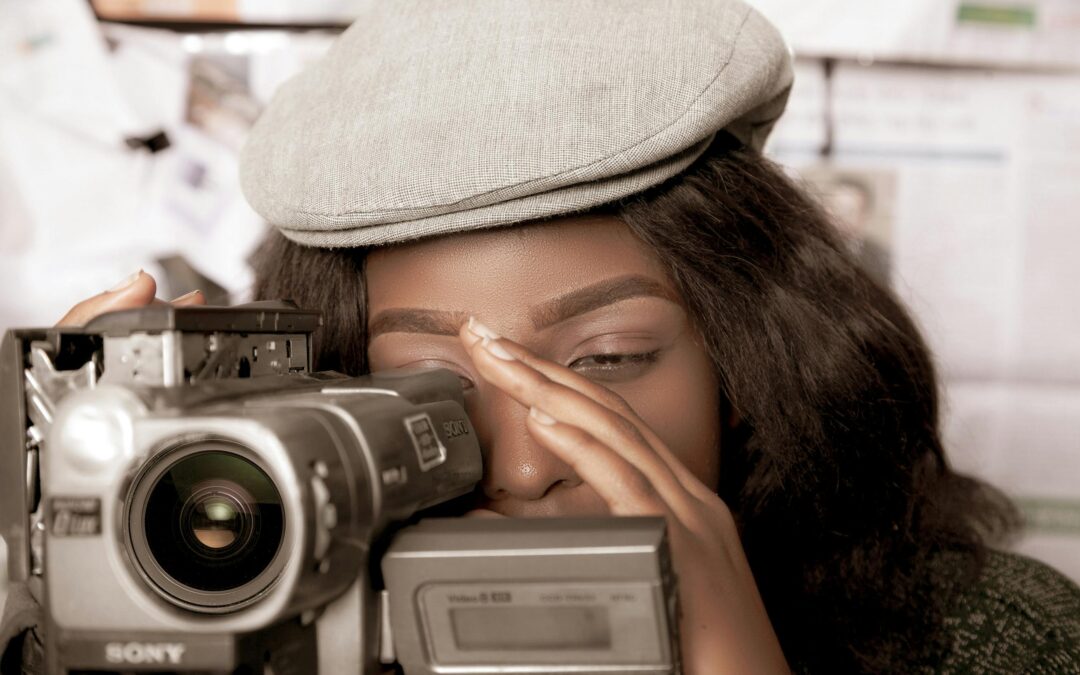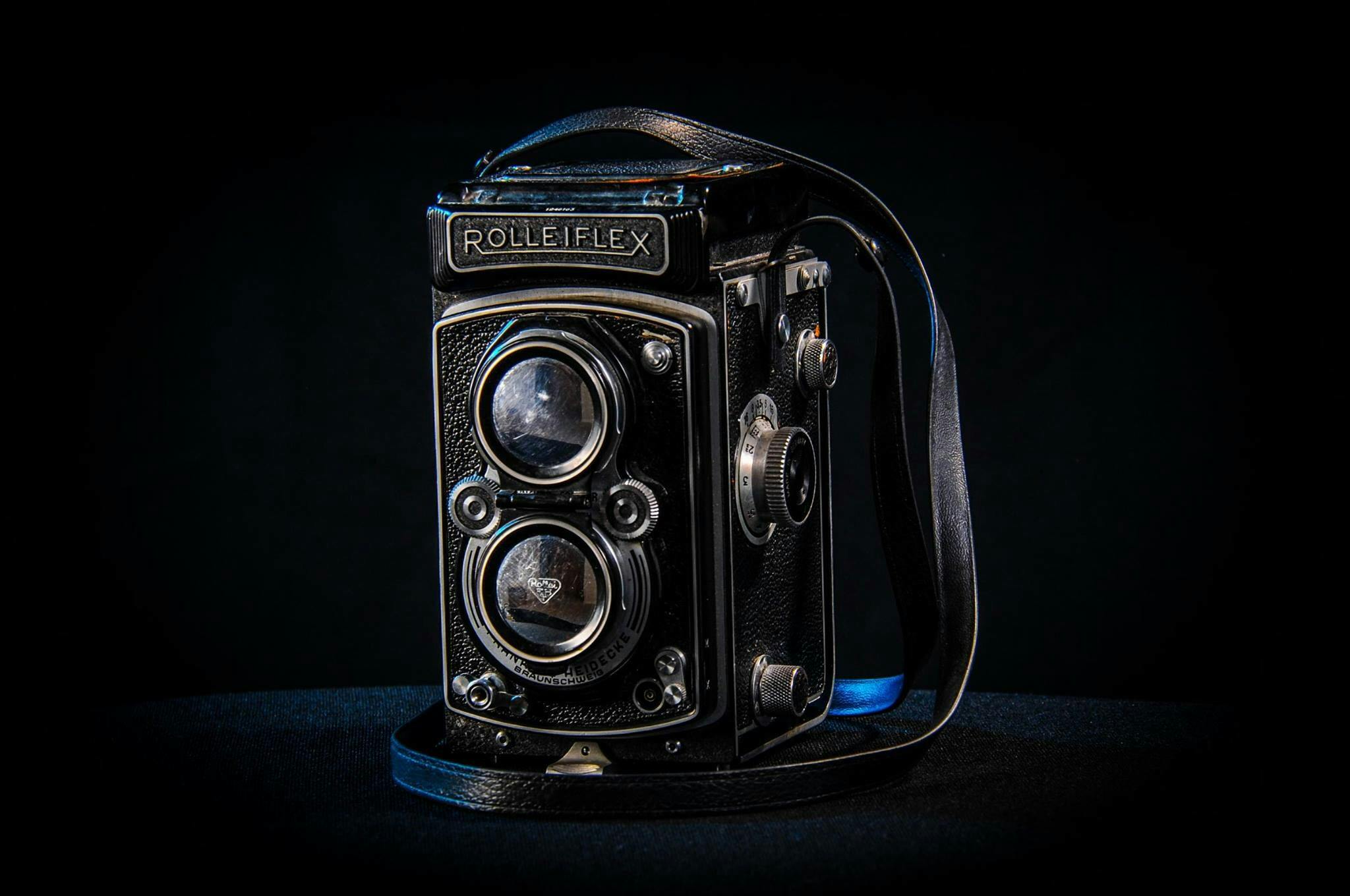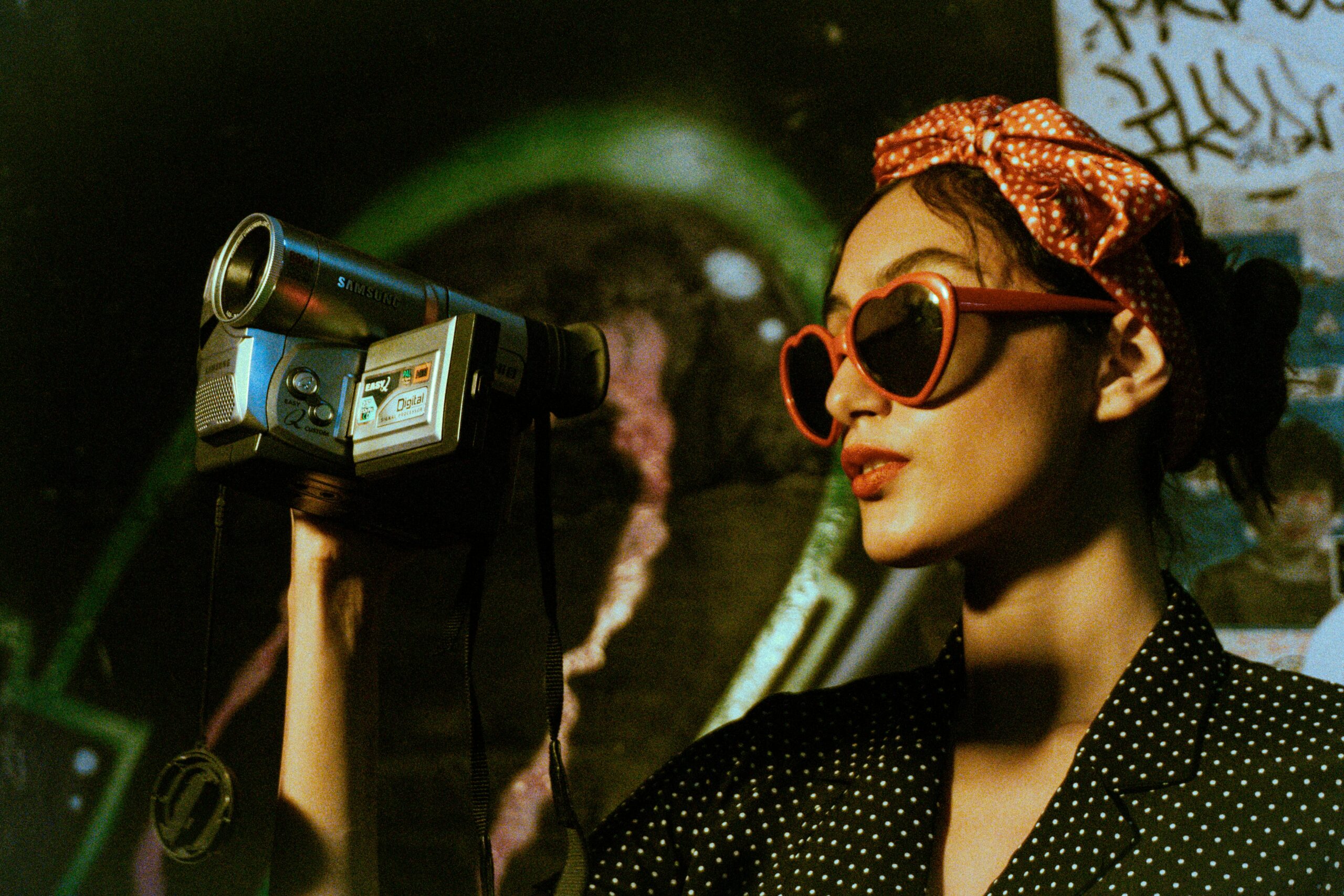There’s something magical about shooting on film that digital cameras just can’t replicate. The 90s were a golden era for photography and I still remember the thrill of loading a fresh roll into my camera and waiting for those prints to develop. Back then film cameras weren’t just tools—they were companions on every adventure.
As someone who’s passionate about capturing moments the old-school way I know the right camera can make all the difference. The 90s brought us some of the best film cameras ever made combining reliability with that unmistakable analog charm. Whether you’re a seasoned photographer or just curious about vintage gear let’s take a look at what made these cameras stand out and why they’re still beloved today.
What Made 90s Film Cameras Iconic
Reliable Build and Mechanics
Manufacturers like Nikon, Canon, and Pentax focused on metal chassis, manual dials, and ergonomic shapes. I valued these robust construction features on models like the Nikon F100 and Canon EOS-1N because they withstood years of outdoor use and travel.
Innovative Autofocus Systems
Autofocus advances like multi-point sensors and rapid motor drives changed how I captured fast-moving subjects. Cameras such as the Canon EOS 3 and Minolta Dynax 7 offered quick focus for sports, events, and candid street photography.
Classic Manual Controls
Picking aperture, shutter speed, and focus felt tactile and intentional with dedicated dials and rings. I appreciated this manual precision in cameras like the Pentax LX, which helped me learn exposure deeply.
Film Flexibility and Compatibility
Bodies from the 90s worked with a vast range of 35mm, medium format, and specialty films. I enjoyed experimenting with Fuji, Kodak, and Ilford film stocks to create distinct looks and grain, while many cameras supported various ISO settings and film-back swaps.
Distinct 90s Aesthetic
Camera design trends favored compact profiles, minimalist branding, and understated black or champagne finishes. Using these sleek bodies made me stand out from crowds carrying digital point-and-shoots.
Proven Reliability in Demanding Environments
Pro models like the Nikon F5 and Canon EOS-1N performed in harsh climates, newsrooms, and expeditions. Photojournalists and enthusiasts relied on these bodies for consistent metering, battery life, and weather sealing.
Key 90s Film Camera Features
| Feature | Impact on Use | Example Models |
| Autofocus advancements | Faster focus acquisition | Canon EOS 3, Nikon F100 |
| Robust metal construction | Enhanced durability | Nikon F5, Pentax LX |
| Interchangeable lenses | Greater creative options | Canon EOS-1N, Minolta 7 |
| Manual controls | Improved learning curve | Olympus OM-4Ti, Pentax LX |
| Versatile film compatibility | Broad style experimentation | Contax G2, Nikon FM2 |
90s film cameras became iconic by combining tactile controls, innovative technology, and enduring reliability. I find that these qualities made each model a valued creative tool and collectible piece.
Top 35mm Film Cameras of the 90s
Legendary 35mm film cameras from the 90s set benchmarks for performance, reliability, and mechanical beauty. I explore three defining models many professionals and enthusiasts trusted during this decade.
Canon EOS-1 Series
Canon’s EOS-1 series cameras shaped the 90s landscape for pro-level SLRs. I note their robust polycarbonate and metal construction, which resisted hard use in the field, and weather sealing that protected interior components. Autofocus performance relied on an advanced TTL phase-detection system, with rapid single-point or multi-point tracking. Models like the EOS-1N (1994) integrated a 45-point autofocus system, silent film advance, and compatibility with EF lenses—including USM examples for swift, quiet focusing. I appreciated their extensive custom functions, enabling tailored controls for demanding photo assignments.
| Model | Year | Autofocus Points | Weather Sealed | Lens Mount | Notable Feature |
| EOS-1 | 1989 | 1 | Yes | Canon EF | Rapid 2.5 fps motor drive |
| EOS-1N | 1994 | 45 | Yes | Canon EF | 6 fps optional booster |
Nikon F5
Nikon’s F5 earned a reputation as an industry workhorse and flagship for photojournalists. I recall its rugged, magnesium-alloy body paired with complete environmental sealing—a necessity for outdoor or event work. The dynamic matrix metering, first introduced here, measured subject brightness across five segments for consistent exposures. The 5-point autofocus system provided quick, accurate focus even in low light. Nikon’s F-mount ensured access to an extensive catalog of high-quality Nikkor optics, including classic primes and pro zooms. I found its integrated motor drive offered rapid continuous shooting at 8 fps, the fastest among 90s SLRs.
| Model | Year | Autofocus Points | Metering Segments | Weather Sealed | Lens Mount |
| F5 | 1996 | 5 | 5 | Yes | Nikon F |
Pentax K1000
The Pentax K1000 stood out as a manual SLR that remained popular into the 90s, favored for teaching and enthusiast use. I consider its all-mechanical shutter operation and absence of unnecessary automation created a purist’s platform—perfect for learning exposure and focus fundamentals. The full metal chassis and simple center-weighted metering delivered tactile control, with a reliable needle-based meter aiding exposure. Its K-mount enabled broad lens compatibility, from affordable standard 50mm f/2 primes to unique legacy glass.
| Model | Year Range | Metering Type | Battery Dependent | Lens Mount |
| K1000 | 1976–1997 | Center-weighted, CdS | No (except meter) | Pentax K |
Legendary Medium Format Cameras
Medium format cameras from the 90s set new standards for image quality and creative control. I discovered these cameras delivered unmatched negatives and became tools of choice for both studio and location work.
Mamiya RZ67
Mamiya RZ67 defined medium format flexibility in the 90s. I captured portraits, landscapes, and fashion work with its modular system, rotating back, and 6×7 cm film format. Built with electronic shutter controls and interchangeable film backs, RZ67 gave me the precision film photographers demanded. Photographers used the RZ67 for editorial features in fashion magazines and high-resolution studio work for clients like Vogue and Harper’s Bazaar. RZ lenses like the 110mm f/2.8 produced sharp, detailed images with smooth bokeh.
| Feature | Mamiya RZ67 |
| Film Format | 120/220 (6×7 cm) |
| Lens Mount | Mamiya RZ Bayonet |
| Focusing | Bellows Manual |
| Shutter Speeds | 8s – 1/400s (electronic) |
| Weight (body only) | 2.4 kg |
| Notable Lenses | 110mm f/2.8, 50mm f/4.5 |
| Viewfinder | Waist-Level/Prism Available |
| Specialty | Studio Portraiture, Editorial |
Hasselblad 500 Series
Hasselblad 500 Series, especially models like the 503CX and 501CM, represented 1990s medium format excellence. When I needed absolute reliability and iconic square frames, Hasselblad was my tool. The signature modular design, Zeiss glass, leaf shutters, and precise mechanical operation fueled popularity among fashion and fine art photographers. The 6×6 cm negatives gave me room for creative cropping and large exhibition prints. Commercial studios preferred these models for product photography and classic portraiture, citing their consistent sharpness.
| Feature | Hasselblad 500 Series |
| Film Format | 120/220 (6×6 cm) |
| Lens Mount | Hasselblad V (Zeiss Lenses) |
| Focusing | Manual |
| Shutter Speeds | 1s – 1/500s (leaf shutter) |
| Weight (body only) | 1.3 kg (500C/M) |
| Notable Lenses | Zeiss 80mm f/2.8, 50mm f/4 |
| Viewfinder | Waist-Level/Prism Available |
| Specialty | Portraiture, Commercial |
Medium format legends like the Mamiya RZ67 and Hasselblad 500 shaped the visual style of the 90s. Their images remain benchmarks in portraiture and editorial work.
Compact and Point-and-Shoot Classics
Compact 35mm cameras from the 90s offered portability, sharp optics, and easy operation. I found these models ideal for snapshots, travel, and street photography, with models like the Olympus Stylus Epic and Yashica T4 distinguishing themselves through design and image quality.
Olympus Stylus Epic
Olympus Stylus Epic delivered sharp images with its 35mm f/2.8 lens. I valued its pocketable body and weatherproof sealing, which made it reliable for spontaneous outdoor shooting. Autofocus accuracy and automatic flash operation provided dependable results in varying conditions. This model became popular with enthusiasts for street and documentary work.
| Feature | Olympus Stylus Epic |
| Lens | 35mm f/2.8 |
| Autofocus | Yes |
| Flash | Built-in, automatic |
| Body Material | Polycarbonate, weatherproof |
| Size (W x H x D, mm) | 108 x 59 x 35 |
| Year Introduced | 1997 |
Yashica T4
Yashica T4 is recognized for the Carl Zeiss Tessar 35mm f/3.5 lens, which produced contrast-rich, high-resolution negatives. I appreciated its straightforward operation and compact, lightweight build, well suited for travel and candid photography. The top-deck “Super Scope” finder allowed discreet, low-angle compositions that appealed to street and fashion photographers.
| Feature | Yashica T4 |
| Lens | 35mm f/3.5 Carl Zeiss Tessar |
| Autofocus | Yes |
| Flash | Built-in, automatic |
| Finder | Super Scope for waist-level |
| Size (W x H x D, mm) | 117 x 60 x 37 |
| Year Introduced | 1992 |
Why 90s Film Cameras Are Still Loved Today
Nostalgia remains a primary force behind the ongoing popularity of 90s film cameras. I see photographers and collectors drawn back to authentic analog experiences, favoring the tactile click of a film advance lever and the anticipation of developing negatives over immediate digital feedback.
Build quality and durability define 90s film cameras. Manufacturers like Nikon and Canon used metal bodies and precise mechanisms, producing cameras that often still function reliably after 30 years. I find that many professionals trust these legacy models, relying on their tested robustness in today’s creative workflows.
Image character produced by 90s cameras stands out for unique color renditions, natural film grain, and exposure latitude. Contemporary users often choose specific film stocks—like Fuji Superia or Kodak Portra—to achieve vibrant, timeless results unattainable with digital filters. Each roll adds to the sense of anticipation and satisfaction.
Manual controls offer creative discipline. Shooting on 90s cameras means I determine each shutter speed, aperture, and focus point, giving me an intentional process not replicated by most point-and-shoot digital cameras. These tactile steps give me deeper engagement with every frame.
Versatility and compatibility with existing lenses and accessories increase the value of 90s cameras. Many SLRs from the era accept a wide range of 35mm and medium format lenses, flashes, and motor drives, letting me personalize setups for portraits, landscapes, or street photography.
Collectibility adds another dimension. Limited editions and models connected to cultural moments—such as the Contax T2, often featured in celebrity snapshots—continue to appreciate in collector markets. Rarity, cosmetic condition, and provenance influence values.
Below, I’ve listed notable attributes that drive ongoing demand for top 90s film cameras, along with examples and their enduring qualities:

| Feature | Example Cameras | Enduring Value |
| Durable Construction | Nikon F5, Canon EOS-1, Pentax K1000 | Survive frequent use, weather, aging |
| Unique Image Aesthetics | Olympus Stylus Epic, Hasselblad 500CM | Distinct color, grain, look |
| Mechanical Reliability | Pentax K1000, Mamiya RZ67 | Consistent performance without electronics |
| Manual Controls | Nikon FM2, Pentax K1000 | Full creative control of exposure, focus |
| Collectibility | Contax T2, Yashica T4 | High secondary market demand |
Current film communities and social media reinforce the cultural presence of these 90s classics. I note photographers of all skill levels continue learning on these robust cameras, inspiring a new generation with the same analog excitement that defined the decade.
Conclusion
Exploring the best film cameras of the 90s always reminds me why I fell in love with photography in the first place. There’s something special about the tactile feel of these machines and the anticipation that comes with every roll of film.
Whether you’re a seasoned shooter or just discovering analog for the first time the cameras from this era offer a blend of reliability and creative freedom that digital can’t quite replicate. If you’re looking for a camera that’s both a tool and a piece of history you’ll find plenty to inspire you in the classics of the 90s.



